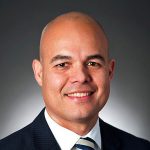*Updated on 4/26/18 with additional Comments
Yesterday the United States Supreme Court issued decisions in both Oil States v. Green Energy and SAS Institute v. Iancu. In Oil States the Supreme Court upheld the constitutionality of inter partes review (see here, here and here). In SAS Institute, a 5-4 majority ruled that there is no authorization in the statute for the Patent Trial and Appeal Board (PTAB) to partially institute a petition for inter partes review. Thus, the Supreme Court held that when the Patent Office institutes an inter partes review it must decide the patentability of all of the claims the petitioner has challenged.
To provide instant reaction to the Supreme Court’s decision in SAS Institute we’ve reached out to an All-Star panel of industry experts for their take on this important decision. Their analysis follows.
 Chief Judge Paul Michel
Chief Judge Paul Michel
Chief Judge, US Court of Appeals for the Federal Circuit (ret.)
In SAS, why does it require the Supreme Court to say the clear words of the statute mean what they say and must be followed? It seems that the PTO took certain broad grants of authority in the AIA to mean they could do almost anything to their individual liking or administrative convenience. Interests of patent owners and patent challengers do not count for much if anything in their view.
 Bob Stoll
Bob Stoll
Partner, Drinker Biddle
In what I believe is the more interesting decision today, the Supreme Court held for SAS by a 5-4 decision that the PTAB can’t just review those claims that it maintains meet the threshold for institution, but must review all of the challenged claims if it institutes the process. While partial institution is not discussed in the statute, at least the minority asserted that if the board didn’t think that some of the challenged claims had a “reasonable likelihood of success” not instituting the process with respect to those claims was simply preventing a waste of time. It will be interesting to see if petitioner strategies change with respect to the challenges of more claims and how the USPTO handles the new process mandated by the Court.
 Sharon Israel
Sharon Israel
Partner, Shook, Hardy & Bacon, LLP
In SAS Institute, by contrast, the Court’s decision could dramatically impact patent challenge practice by parties before the Board, by the Board itself, and through the application of estoppel in district court proceedings. The SAS Institute decision puts an end to “partial institution” decisions that result in final written decisions only on the instituted claims. Instead, if the Board institutes trial on just one claim, and all claims have been challenged, then the Board must issue a final written decision on all challenged claims. For expediency, this means the Board may streamline its institution decisions to only address one challenged claim, and not all challenged claims. Alternatively, the Board may exercise its discretion more often in declining to institute IPRs. As a practical matter, parties to an IPR proceeding may not know much about what the Board is thinking until they receive a final written decision, creating less certainty for parties during the proceeding, assuming a trial has been instituted. For petitioners, this also implicates the application of estoppel before district courts. Estoppel only applies to challenged claims which are the subject of a final written decision. Under SAS, the Board likely will be issuing final written decisions, addressing grounds on which it would not have previously instituted under its “partial institution” practice. This effectively means that estoppel will have more teeth, and petitioners should assume that estoppel is more likely to apply, should they be unsuccessful on any ground. It remains to be seen how the SAS Institute case will apply to pending and recently decided cases. The Supreme Court didn’t address any retroactive application to its decision, and the Board itself will need to amend its rules to comply with today’s decision.
 John White
John White
US Patent Attorney, Patent Lecturer and Owner of Patent Teaching Co.
So what does SAS do for the US Patent System already mortally wounded by eBay (compulsory licensing) and now by Oil States (PTAB IPR record of 2/3 chance of invalidity endorsed)? Little, very little, on its own. It is like handing a Band-Aid to the Knight in Monty Python and the Holy Grail who has “just a flesh wound”! That is, it makes no difference whatsoever. But, if the rules surrounding IPR are changed, and if IPR becomes a rare procedure that results in a “better patent”, then a requirement that all the requested claims be subject to a final written decision makes some sense. But, until this IPR procedure is changed, this SAS requirement is of little effect.
And, inasmuch as IPR rules and policy will necessarily be adjusted in view of this decision, here’s what I suggest. IPR should only be used where the considerable “technical expertise” of the PTO as to invalidity based on patent and printed publication prior art needs to be sought. In this regard, an IPR should be a “contested” examination, not a summary stripping of patent rights as it is in its present configuration. An IPR procedure should allow amendments and examination of those amendments; hence, a patent can be kept alive in view of new prior art. A patentee may forgo keeping/resuscitating some claims while maintaining others. A requirement that the PTAB issue a final judgment on all challenged claims, as now required by SAS, would be useful to all. Adjustments to PTAB IPR would be: 1) begin with an institution decision based on an identical standard to that used in a District Court (including claim interpretation and “clear and convincing evidence”); if instituted, then 2) appoint an “expert” examiner in the relevant “technical” field as an effective “special master” to make a first pass, review evidence, allow amendments etc., and then proceed back to a 3 member PTAB for final adjudication, as necessary. A much better patent would result, and appropriate rights preserved. Let’s rebuild what has been torn asunder. (And, overturn eBay!)
 Erik Oliver
Erik Oliver
Partner, Richardson Oliver Law Group
Lesson learned: I should have stuck with my original prediction (which swapped wrongly after oral arguments). Though, this was a 5-4 decision, so a close call. Here, the US Supreme Court reversed the Federal Circuit and will require the USPTO to treat an instituted IPR as requiring all challenged claims to receive a written decision. As some commentators predicted, the Court took these cases as an opportunity to comment on the potential for an overbroad reading of the Chevron-doctrine of deferring to administrative agency decisions. While the majority takes pains not to overrule Chevron, they also seem to have seen this case as a vehicle to cabin Chevron-deference requests from administrative agencies when the Court views the statute as clear. Relatedly, for the longer term, Kagan disagreed with the portion of Breyer’s dissent which tried to find support for the USPTO on Chevron grounds.
The impact of this case will be felt over a longer period than Oil States (business as usual). It is possible that, as Ginsburg’s short dissent pointed out, the USPTO may simply start to refuse broad institution requests and hint strongly at which claims could be refiled to gain a favorable institution decision. Another possible outcome is that the USPTO tilts towards non-institution if the original request includes claims on which institution is not merited with no hint. The first approach would slow the IPR process down by a few months for the back-and-forth. The second approach would tilt away from IPR institutions.
Still other outcomes are possible, e.g. granting as at present and writing very pro forma decisions on the less interesting claims, etc. Of the two patent cases ruled on today this one is the one to eye longer term in my mind. Firstly, it will change IPR practice in terms of both the initial requests, the institution process, and the written opinions. This will take time to be felt in the system. Relatedly, this case may be a signpost of cabining Chevron-deference more tightly going forward which is another area to watch closely.
 Fabio Marion
Fabio Marion
Vice-Chair IP Department, Chair IP Litigation, Polsinelli
Today the Supreme Court brought clarity to the IPR practice, affirming its constitutionality, but also requiring the PTAB to fully resolve the invalidity grounds raised in the Petition. This raises new issues for lower courts to address, namely, clarifying the scope of estoppel in both previously decided, as well as future IPRs.
Specifically, up to now estoppel in district court proceedings has only applied to grounds that were actually instituted. Courts will now have to decide whether estoppel will also apply to grounds the PTAB decided not to institute. Further, courts will have to decide how SAS affects IPRs that are already concluded. For example, how grounds that were not instituted will be treated.
 Van Lindberg
Van Lindberg
Member, Dykema Cox Smith
SAS Institute is more likely to significantly change IPR and patent trial practice. On one hand, a “reasonable likelihood that the petitioner will prevail on at least 1 of the claims” can be used to justify review of all claims in the patent. On the other hand, this decision will make the estoppel provisions of the IPR statute have much greater teeth.

 Kean DeCarlo (left) & Scott Sudderth (right)
Kean DeCarlo (left) & Scott Sudderth (right)
Partners, Womble Bond Dickinson
The Supreme Court’s affirmation of a regime of post-patenting inter partes review that resolves challenges to all patent claims raised in the petition upon initiation of an inter partes review provides the petitioner the ability to have patentability determinations as to a particular patent adjudicated efficiently in a single proceeding before the Board or in court. By eliminating the Director’s previously allowed use of a partial-decision regime, this holding further empowers the estoppel provisions of the Patent Act, which acts to prevent petitioners from raising in a subsequent challenge the same patent issues that could have been raised in a prior challenge. Bottom line – this is primarily a pro petitioner ruling that will increase both the leverage of petitioners in inter partes review proceedings and the patent holder’s expenses resulting from the requirement to defend all the asserted patent claims.
 Stephen Kunin
Stephen Kunin
Partner, Oblon, McClelland, Maier & Neustadt, L.L.P.
In a 5-4 decision in SAS Inst. Inc. v. Iancu, 16-969 the Supreme Court held that the according to the plain meaning of § 318(a) “the agency cannot curate the claims at issue but must decide them all.” Henceforth, the USPTO “shall issue a final written decision with respect to the patentability of any patent claim challenged by the petitioner,” This decision with have significant impact on PTAB and Solicitor’s Office resources. The level of effort will significantly increase for conducting AIA trials and appeals to the Federal Circuit. This decision will benefit petitioners who will now have more options during trial to put their best evidence and arguments forward to seek to prevail before the PTAB or on appeal to the Federal Circuit. It will also force patent owners to have to expend more resources to defend their patents at trial and on appeal.
 Charles R. Macedo
Charles R. Macedo
Amster Rothstein & Ebenstein LLP
In SAS Institute v. Iancu, a split Supreme Court found that “When the Patent Office institutes an inter partes review, it must decide the patentability of all of the claims the petitioner has challenged.” The majority rejected the current practice of the PTAB to grant partial institutions, as extra-statutory. Based on the plain terms of the statute: the Patent Office must “issue a final written decision with respect to the patentability of any patent claim challenged by the petitioner.” 35 U. S. C. §318(a) (emphasis added), the Court recognized that “any” means “every”. From the majority’s reading the statute: “In all these ways, the statute tells us that the petitioner’s contentions, not the Director’s discretion, define the scope of the litigation all the way from institution through to conclusion.” While the opinion suggests that upon institution all grounds raised, in addition to each claim challenged, must be addressed in the Final Written Decision,, the decision is vague in addressing this aspect current PTAB practice. Perhaps next term the Supreme Court will answer that question.
Brad Pedersen
Patterson Thuente IP
In the SAS Institute decision handed down today, Justice Gorsuch authored the 5-4 majority decision strictly construing what the Patent Trial and Appeal Board must rule upon in a Final Written Decision at the end of an IPR trial. In overturning USPTO rulemaking, Justice Gorsuch ruled that the Board is not authorized to render so-called “partial institution” decisions. Instead, the statute is clear that the Board must address all of the claims that are being challenged by a petition in a Final Written Decision at the end of an IPR trial. Regardless of which camp you are in, this decision is a mixed and messy bag of results.
The SAS Institute decision creates immediate chaos and uncertainty for the hundreds, if not thousands, of IPR proceedings for which an IPR trial has been instituted but all appeals are not yet finalized. Will IPR cases already on appeal be remanded, en mass, by the Federal Circuit back to the Board to effectively rework each Final Written Decision? Will parties be allowed to introduce evidence and/or arguments in pending IPR trials relative to claims for which an IPR trial was not instituted, and would this apply if pending appeals are remanded? If non-instituted claims must now be addressed in each Final Written Decision, does that effectively end the partial approach to patentee estoppel under Section 315(e) that is current Federal Circuit law under the 2016 Shaw decision (817 F.3d 1293)?
On the brighter side. the mixed and messy SAS Institute decision may be the push Congress needs to revisit the America Invents Act and address the many issues relating to fairness, procedures, claim construction, claim amendments, and burdens of proof that commentators have raised regarding IPR proceedings.
In the interim, it is likely that the USPTO will be forced to provide some type of stop-gap measure in response to the SAS Institute decision. The Office will need to promulgate rules as quickly as they can on how to deal with claims challenged in a petition that were not part of the claims for which an IPR trial was instituted. One approach to such a stop-gap solution would be to promulgate rules that no new evidence or arguments can be introduced by the parties during an IPR trial for any claims which did not meet the threshold test for institution, and that the Board will repeat the same analysis set forth in the Decision to Institute relative to such non-instituted claims as part of any Final Written Decision. USPTO rule promulgation, however, is never a quick and clean process, so it may be at least several months before even stop-gap measures will be in place.
 Rubén Muñoz
Rubén Muñoz
Partner, Akin Gump
The SAS decision is a win for petitioners in the following sense. As long as the PTAB finds at institution that there is a reasonable likelihood that a petitioner will prevail on its challenge to at least one claim, that petitioner now has the ability to continue the fight on all other challenged claims—not only in the IPR proceeding itself, but also through appeal. SAS is a game changer in that it has the potential to put claims at risk that would have otherwise remained in a patent owner’s IP arsenal in a pre-SAS world.
 Peter Harter
Peter Harter
Founder, The Farrington Group
Breyer’s dissent says we should reach statute to only focus on claims challenged in the proceeding and not all the claims in the original petition. Gorsuch is saying strict statute and perhaps no Chevron deference to agency to interpret statute but in reality Gorsuch is helping IPR petitioners and creating more work for PTAB and perhaps in doing so Gorsuch is expanding the scope of the administrative state, opposite of his expected anti-agency ideology.
Gorsuch for the 5-4 opinion which fell conservative against liberal justices. Roberts, Kennedy, Thomas, and Alito joined Gorsuch flatly ruled that the statute says the USPTO must decide the patentability of all of the claims the petitioner has challenged. With dissents from Ginsburg (Breyer, Sotomayor, Kagen), and Breyer (Ginsburg, Sotomayor joined and Kagen joined partly) I think we now have a roadmap of the Court pushing back on the administrative state and others protecting it.
 S. Benjamin Pleune
S. Benjamin Pleune
Partner, Alston & Bird
The Federal Circuit is already overwhelmed with appeals from the PTAB. In 2013 the CAFC had less than 150 appeals from the patent and trademark office. In 2017 there were nearly 600. The practical outcome of the Supreme Court’s decision in SAS is that this workload will only increase, as the PTAB can no longer dispose of a subset of challenged claims at the institution phase, a decision that is not subject to appeal. Instead, all challenged claims must be addressed in the final decision, providing additional appealable issues for the Federal Circuit to decide. In addition, savvy petitioners may load in claims to add pressure on patent owners and increase the potential for a stay of any co-pending district court action.
 Terry Clark
Terry Clark
Member, Bass, Berry & Sims
The SAS Institute decision makes certain that if the PTAB institutes an IPR proceeding on only one claim, it must consider the invalidity of EVERY challenged claim regardless of the merits. Unless the Patent Office significantly expands the PTAB’s capacity to accept a substantial increased workload, this decision may have the unexpected result of reducing the percentage of petitions actually granted, shifting more invalidity disputes back into Article III courts.
It remains to be seen whether Congress (with different versions of patent legislation currently pending before the House and the Senate) will take up the policy questions implicated in these decisions.
 Michael Babbitt
Michael Babbitt
Partner, Jenner & Block
The Oil States decision is what we expected. It solidifies the IPR scheme but does not upend current PTAB practices. The SAS decision is more interesting and may lead to some uncertainty, at least in the short term. It is unclear how the PTAB will react to SAS, particularly at the institution stage. If the PTAB writes institution decisions addressing each and every challenged claim, then that will mean more work for the PTAB. If the PTAB now writes institution decisions addressing only one claim, as permitted by SAS, then it will conserve judicial resources but provide less guidance to the parties at the outset of trial.
 Ronald Abramson
Ronald Abramson
Partner, Lewis Baach Kaufmann Middlemiss
SAS – a 5-4 decision with sharp dissents – truly creates a mess. Patents typically include many claims, sometime hundreds. Challenges to patent validity often go against a multitude of claims – some of the attacks are naturally stronger than others. This decision requires the Patent Trial and Appeal Board (PTAB) to rule, in a final written decision after an administrative trial – for which the preparation takes a year – on each and every claim challenged – whether the challenge is initially seen as having merit or not. It is a rigid application of the statute, and indeed one not necessarily mandated by the literal statutory language. It threatens to create a massive amount of needless work.
The flip side is that SAS, by forcing a final written decision on all initially challenged claims, will likely lead to a much greater estoppel effect for IPR decisions – a double-edged wild card for all involved in patent disputes. It may also make it more likely that parallel litigation will be stayed, since the decision assures that in the event of an IPR more patent claims will be in administrative state of play for a longer period of time.
In sum, SAS will multiply the proceedings in IPRs and up the ante for all involved – the opposite of the Congressionally intended effect.
The wild card in both of these decisions appears to have been Justice Gorsuch. His dissent from the 8-2 decision in Oil States reflects a rigid application of private property concepts, which purports to rest on ancient English decisions and the writings of Alexander Hamilton. His 5-4 majority decision in SAS is a wooden and misguided application of statutory language. It is literalism run amok.
SAS, the less publicized of these two cases, is the game changer in today’s mix, in that it threatens to change the entire strategy and manner in which IPR proceedings are conducted. What the PTAB will do in response to it is unknown. The dissenting justices suggest that, since IPR institutions are unreviewable (under the Supreme Court’s prior Cuozzo decision), the PTAB could turn down in its entirety any IPR petition with challenges that appear to lack merit and make the petitioner amend the petition and try again. On the other hand, the PTAB could make much more work for itself, and conduct trials and rule on each and every claim – making vastly more work for everyone in what was designed to be a streamlined proceeding. While the institution decision may cast doubt on certain challenges, the petitioner will in effect be invited to reargue those claims post-institution, making the overall contest much more complex than it would have been under current practice. Whether the PTAB can even handle this sudden increase in the volume of work that it must do is another question.
Yet another question is whether SAS has retroactive effect on past decisions in which the PTAB instituted and tried cases on fewer than all challenged claims. This could be another massive upset to otherwise resolved cases. SAS will likely go down as one of the more unfortunate IP decisions in Supreme Court history.
John Luken (left)
IP partner at Dinsmore & Shohl LLP
Oleg Khariton (right)
IP associate at Dinsmore & Shohl LLP
The SAS decision has the potential to reshape post-grant practice in significant ways. Since the Court’s decision requires the PTAB to institute on yes-or-no, all-challenged-claims-or-none basis, one would initially be inclined to call the decision “pro-petitioner.” It may also make it easier for accused infringers to obtain stays in litigation pending an IPR. A district court is more likely to grant a motion to stay litigation in light of an IPR if all claims asserted by the patent owner will be addressed by the PTAB in its final written decision, since such a decision could effectively end the case, or at least go a long way towards simplifying the issues for trial. Still, it would probably be premature to characterize the outcome as either “pro-petitioner” or “pro-patentee.” That the PTAB must institute as to claims that it would prefer not to does not mean that petitioners will ultimately succeed as to those claims. In addition, patent owners may find comfort in the broader application of 35 U.S.C. § 315(e) ’s estoppel provision. In cases where the PTAB has instituted a trial with respect to only some of the claims challenged by the petitioner, the petitioner was not estopped under § 315(e) from re-litigating the validity of the non-instituted claims. However, since those claims will now have to proceed to a final written decision, the § 315(e) estoppels will attach to those claims as well following a final written decision in the patent owner’s favor.
The decision will likely create workload issues for the PTAB since more claims must be tried and addressed in final written decisions yet the AIA’s time limits for issuing such decisions remain. The PTAB could respond by shortening its deliberations leading to institution decisions. Thus, once a panel concludes that institution is proper for any challenged claim, it could issue a decision explaining that issue but saying little about the other challenged claims, even those on which, pre-SAS, the panel would have instituted and which the panel would have discussed in some detail. This would leave both petitioners and patent owners with less insight into the panel’s thinking (to use in framing post-institution efforts and arguments) than under present practice. It is possible if not likely that the PTAB will simply institute fewer proceedings. For example, where the PTAB might have instituted pre-SAS as to a group of claims even though it was a close call, the fact that doing so now will also require trial on many more claims as well could lead the PTAB to simply exercise its discretion not to institute at all. An interesting possibility is raised in Justice Ginsburg’s dissent, in which she suggests that the PTAB could decline to institute but indicate in the decision that one or more specified claims might merit review, prompting a new, narrower petition on which the PTAB would institute. Justice Gorsuch’s discussion of this in his majority opinion hinted both that this might be the type of “shenanigans” that could be reviewed and reversed under Cuozzo or that it might be a legitimate way to achieve the policy aims of the now-prohibited partial institution regime.
 Douglas Sharrott
Douglas Sharrott
Partner, Fitzpatrick, Cella, Harper & Scinto
The Supreme Court held 5-4 that when the USPTO institutes an inter partes review, it must decide the patentability of all of the claims the petitioner challenged, based on the plain text of 35 U.S.C. § 318(a). The decision thus abrogates 37 C.F.R. § 42.108(a), to the extent it had permitted partial institution on less than all challenged claims. The decision, however, appears to be silent on whether the USPTO must also address all grounds raised by the petitioner (if there are multiple grounds) for a given claim. Since the final written decision must address all claims, the IPR’s determination of their patentability, vel non, is subject to appellate review by the Federal Circuit. IPR estoppel should now attach to all challenged claims on any ground of invalidity that the petitioner ‘raised or reasonably could have raised.’ It is up to Congress to change 35 U.S.C. § 318(a) to permit partial IPR institution on a claim-by-claim basis.
 Sandip H. Patel
Sandip H. Patel
Partner, Marshall Gerstein & Borun
It is a bad day for Congress when nine Justices cannot agree on whether a statute is clear or not. The five Justices comprising the majority applied traditional interpretive rules to conclude that the statutory text and structure are sufficiently clear, refusing to wade into a debate over any efficiencies underlying a policy of partial institution. But, the four Justices comprising the dissenting opinions complain the statute is unclear. These Justices further note that the PTAB could now simply deny a petition containing a challenge having a reasonable likelihood of success if it also contains a challenge having no reasonable likelihood of success. Prospective participants will, therefore, need to be ever more careful in the challenges they present. The Patent Office will have to scramble to apply the Court’s decision in hundreds of pending AIA trial proceedings. And, Congress may need to revisit the statute underlying this turmoil.
 Cyrus Morton
Cyrus Morton
Chair of the Patent Office Trials Group, Robins Kaplan LLP
This case will have a much bigger impact than Oil States. For pending IPRs there will be some chaos. And both now and in the future it will be interesting to see how the PTAB will react. New Director Andre Iancu had already vowed an overhaul, and now will have to factor this in. For patent owners, there is little incentive now to file a POPR if your goal was merely to avoid institution on some claims. On the other hand, now you will get the district court estoppel on all challenged claims should you win at the final written decision. For petitioners, there is a huge benefit to knowing that if you can get one claim instituted, all claims are instituted. Still, will the PTAB simply write an institution decision on one claim, and decide the rest later? Or will they keep the same procedures, but at the end simply say there wasn’t even a reasonable likelihood of invalidity on previously non-instituted claims, so there certainly is not a preponderance of evidence? Either way though, it seems that the petitioner who gets one claim instituted will have an appeal right for all challenged claims based on the final written decision.

![[IPWatchdog Logo]](https://ipwatchdog.com/wp-content/themes/IPWatchdog%20-%202023/assets/images/temp/logo-small@2x.png)

![[[Advertisement]]](https://ipwatchdog.com/wp-content/uploads/2023/01/2021-Patent-Practice-on-Demand-1.png)




![[Advertisement]](https://ipwatchdog.com/wp-content/uploads/2024/04/UnitedLex-May-2-2024-sidebar-700x500-1.jpg)
![[Advertisement]](https://ipwatchdog.com/wp-content/uploads/2024/04/Artificial-Intelligence-2024-REPLAY-sidebar-700x500-corrected.jpg)
![[Advertisement]](https://ipwatchdog.com/wp-content/uploads/2024/04/Patent-Litigation-Masters-2024-sidebar-700x500-1.jpg)

![[Advertisement]](https://ipwatchdog.com/wp-content/uploads/2021/12/WEBINAR-336-x-280-px.png)
![[Advertisement]](https://ipwatchdog.com/wp-content/uploads/2021/12/2021-Patent-Practice-on-Demand-recorded-Feb-2021-336-x-280.jpg)
![[Advertisement]](https://ipwatchdog.com/wp-content/uploads/2021/12/Ad-4-The-Invent-Patent-System™.png)






Join the Discussion
12 comments so far.
Anon
April 27, 2018 07:32 am“ >>They still should not call them patents after Oil States –
I agree. They are no longer patents.”
Oh, you can still call them “patents.”
You just cannot call them property. (or perhaps more precisely, personal property),
A franchise is not personal property. A Public right is not personal property.
Some of called for some new “understanding” of a hybrid meaning.
Public and personal property provide no such “middle ground.”
The Court has NOT defined any such “middle ground.”
So, yet again, the Supreme Court has stepped in and made a muckery of patent law.
They need to be removed from the equation.
Night Writer
April 26, 2018 08:42 pm>>They still should not call them patents after Oil States –
I agree. They are no longer patents.
Josh Malone
April 26, 2018 04:13 pmEither 1) Iancu will need to hire 1000 more APJ’s to decide each and every claim of each and every valuable patent or 2) he will need to drive the institution rate down to 6% to match the Office of Patent Quality Assurance.
Will the political anti-patent division prevail? Or will it be the division chartered with promoting the progress of the useful arts by securing to inventors the exclusive right to their discoveries.
A 6% institution rate might, just might, return a system that stimulates a teeny bit of innovation. They still should not call them patents after Oil States – they are franchises for the wealthy elite.
Anon
April 26, 2018 01:39 pmAs Ned Heller might have pointed out, Lemley plays a mean fiddle (especially when surrounded by flames).
angry dude
April 26, 2018 11:20 amNight Writer@7
“I wonder how much money on the side Google is slipping her”
Quite a bit I assume – and it’s all legal now and confidential
Maybe check her real estate transactions in a while to have some idea – those are public deeds
Lemley himself is an excellent businessman – his business being destroying US patent system
Night Writer
April 26, 2018 11:05 am@6 Oh man. So now Lee can write papers without regard to ethics for the SCOTUS to cite. I wonder how much money on the side Google is slipping her.
Curious
April 26, 2018 10:58 amBob Stoll >>In what I believe is the more interesting decision today
Don’t get me started. He seems to get his talking points from Michelle Lee.
That got me thinking. Where is Michelle Lee? NW: I know you’ll appreciate where she ended up (for now): https://law.stanford.edu/directory/michelle-lee/
Stanford law — who could have ever imagined? She and Lemley are probably sharing high tea — discussing how to further dismantle the US patent system.
Night Writer
April 26, 2018 08:16 amIt amazes me how arrogant Ginsburg is. You would think someone that is so ignorant regarding the real world and anything to do with science/business/technology would have some reserve. She is old. Very old. She needs to retire. She is a toxic person that should not be on the SCOTUS.
Night Writer
April 26, 2018 07:28 amBob Stoll >>In what I believe is the more interesting decision today,
Seriously?
StrongPatents
April 25, 2018 05:09 pmJustice Ginsberg’s comment regarding partial institution:
“Court’s opinion offers no persuasive answer to that question, and no cause to believe Congress wanted the Board to spend its time so uselessly.”
…is very misguided in my reading of the AIA. The AIA was pitched as a faster, cheaper ALTERNATIVE to district court validity rulings. Under the Lee regime, the partial institution decision gave petitioners no reason to not always throw every claim and argument against the wall to see what stuck. Any claims not instituted were handed back to the petitioner with no estoppel to argue validity again in District Court. The SAS ruling provides a jeopardy that, I believe, was intended in the AIA: pick your forum for ALL validity questions, the PTAB or District Court. Viewed in this light, forcing the PTAB to rule on the validity of ALL petitioned claims is anything but, ” the board spending its times uselessly”.
To make a larger point, the reason the AIA passed with bi-partisan support is that, on its surface, it sold the fairly tale of offering a faster, cheaper and better ALTERNATIVE to district court litigation regarding validity.
I am a big believer in the saying, “You can have it fast, cheap or good… pick two”.
Following this principle, the inherent “slow and expensive” nature of district court patent litigation ensured the outcome would be the most fair and thorough possible.
Conversely, setting up the PTAB to somehow come to an equally fair decision by constraining the timeline was always a fool’s errand. We now have thousands of PTAB validity decisions that were produced fast and (relatively) cheap. It is impossible for these decisions to be as “good” as if they were given the due process afforded by a District Court.
If the PTAB is going to be around for a while, I am all for decisions like SAS which compel decisions to be more thorough. If 95% of instituted decisions take the constitutionally allowed 18 mths (instead of 12), so be it. As time and costs increase in PTAB decisions, we at least potentially get closer to “good” decisions being issued that have (estopped) teeth. The big “IF” is whether Iancu will update the BRI and presumption of validity standard. Then we at least have (on paper) something that closely mirrors district court.
The only insurmountable obstacle to fairness is the inherently political nature of the APJs. I am hopeful that this can become equally distasteful (under Iancu) to the efficient infringer lobby as it currently is to the pro-patent rights contingent.
Time will tell.
Pro Se
April 25, 2018 01:04 pmThere was a conscious that patents with many claims (like 50-100) were more hardened from IPR attack than others.. not anymore.
Focus on the weakest claim, get institution on 1 claim, get institution on them all.
Anyone with a district court beef better account for 7 years minimum of being stayed, PTAB final written decision, and possible appeals before Markman.
Anon
April 25, 2018 12:48 pmAs to the Chevron effect, I like what one poster (Greg DeLassus)has postulated on that other blog:
https://patentlyo.com/patent/2018/04/institute-litigation-strategies.html#comment-406584
In essence, in the coming ensuing strategies of which claims to challenge in IPRs, the choice NOT to challenge would be worthwhile to hold to an estoppel effect and prevent any later PTAB of Article III challenge.
This view would dovetail nicely with Ron Katznelson’s explanation as to why innovators facing death by a thousand cuts (had?) earned a level of presumption of validity of a granted patent to a clear and convincing standard.
Of course, with the power provided to the administrative state in the Oil States decision, does the presumption of validity – and more importantly, the level of that presumption) have any real meaning left?
I suspect that the (rather weak) dicta the Thomas offered as patents still being property (in certain respects) will quickly show its weakness as alternative “franchise” or “public” avenues of attack are emboldened to the point that the traditional “property” aspects descend into a state of being a meaningless shell (perhaps beign worth literally the cost of the paper used).